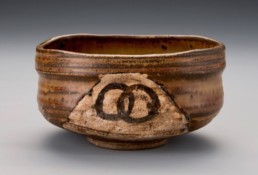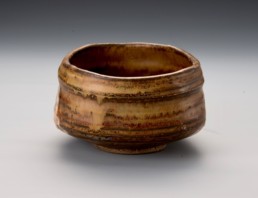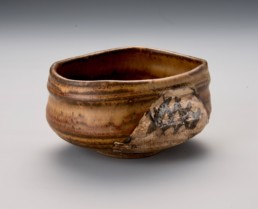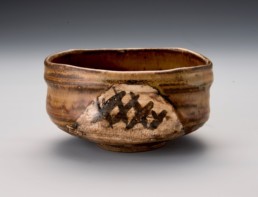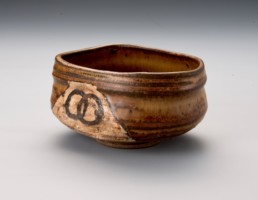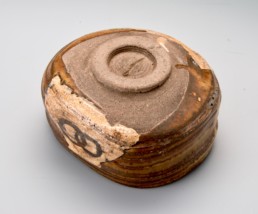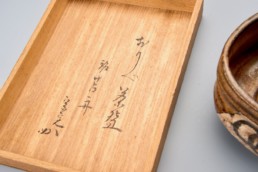An Excellent Edo Period Oribe Tea Bowl with Poetic Name ‘Toma-bune’
Artist:UnkownEra:EdoPrice:$4,500Inquire:info@shirakuragallery.com
Oribe is a visual style named after the late-16th-century tea master Furuta Oribe (1544-1615). Typically, black or green glazes are applied to the bodies of these works and light-colored windows are created using feldspar. These high-contrast areas then acts as a canvas upon which abstract, minimalistic, and often naturalistic themes are painted.
This piece is quite unique for its brown color which may have been produced using a copper glaze under very specific conditions. Typical of Mino pieces of the time however, it is made of coarse, unrefined clay and has a distorted and exaggerated “kutsugata” shape which is in stark contrast to many other potting traditions in Japan that tend towards more regular and orthodox forms.
In fine antique condition, this tea bowl is 5.6 inches in diameter (14.2 cm) and stands 3 inches tall (7.5 cm). An especially beautiful composition, the front and back of the bowl are decorated with minimalistic designs and the clay body has taken on a nice patina from several hundreds of years of use. The custom made wood box looks to have been furnished within the last 50 years and bears the endorsement of the 12th generation tea master of the Horinouchi clan of Omotesenke, Horinouchi Soshin (1919-2015). Due to its shape and color, Soshin granted this tea bowl the poetic name “Toma-bune,” a traditional thatch-roofed leisure boat for navigating lakes and rivers.
